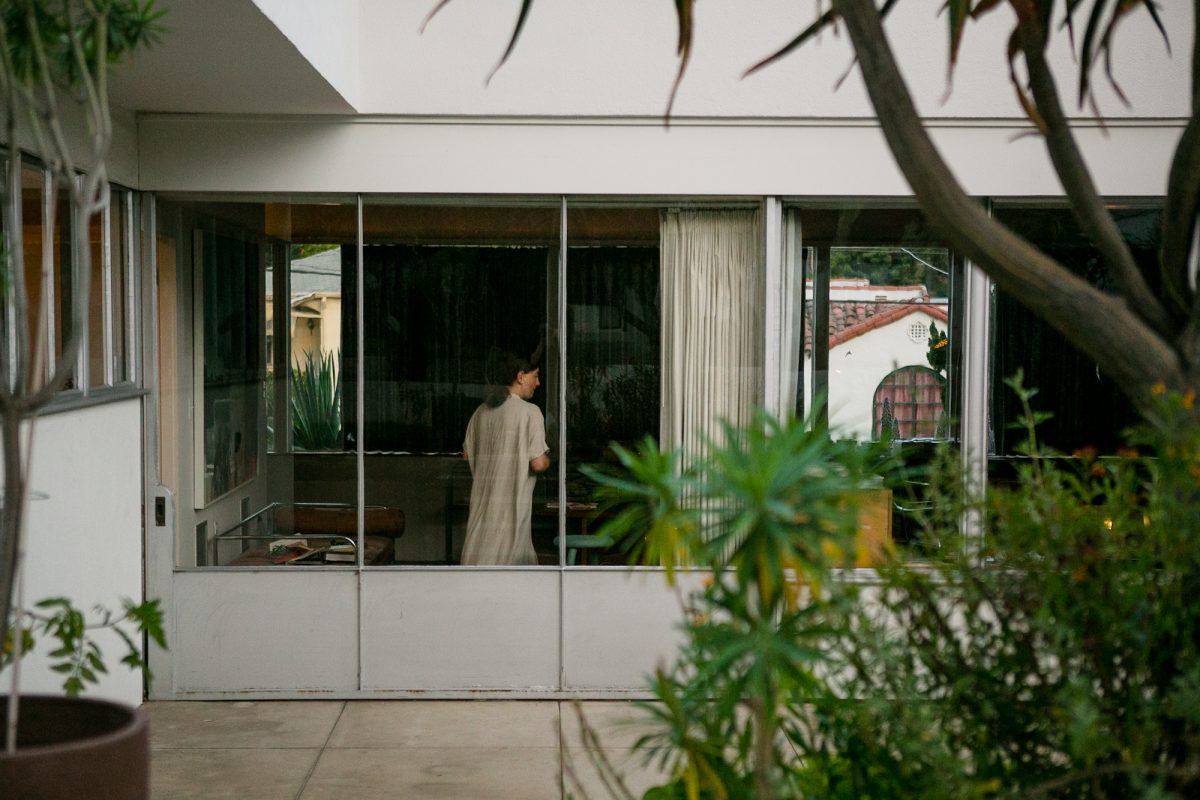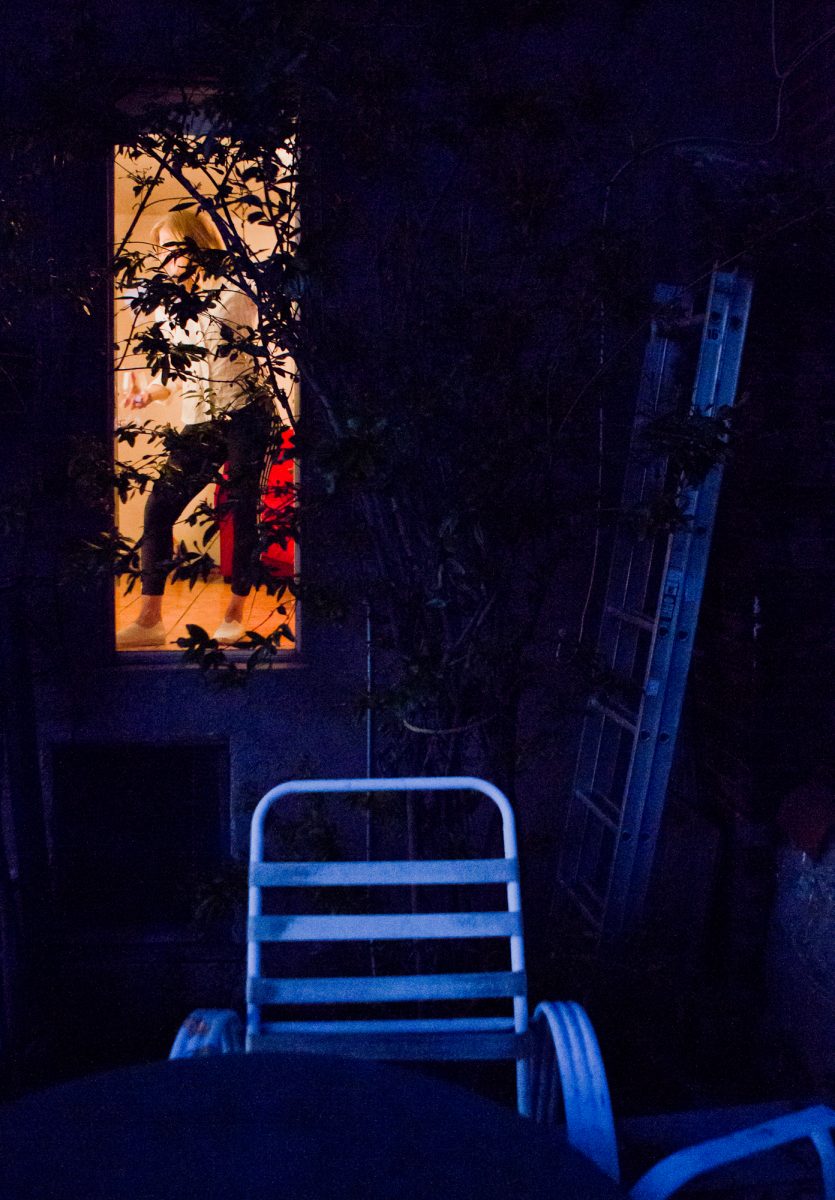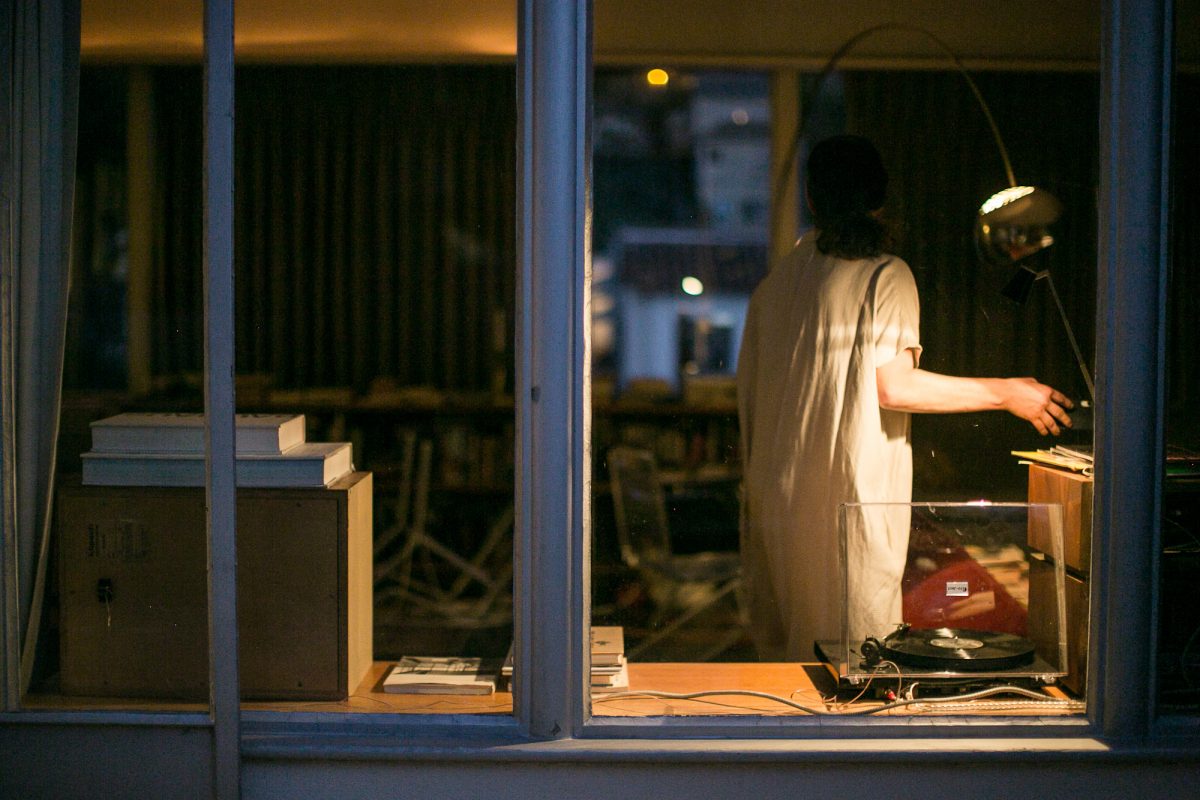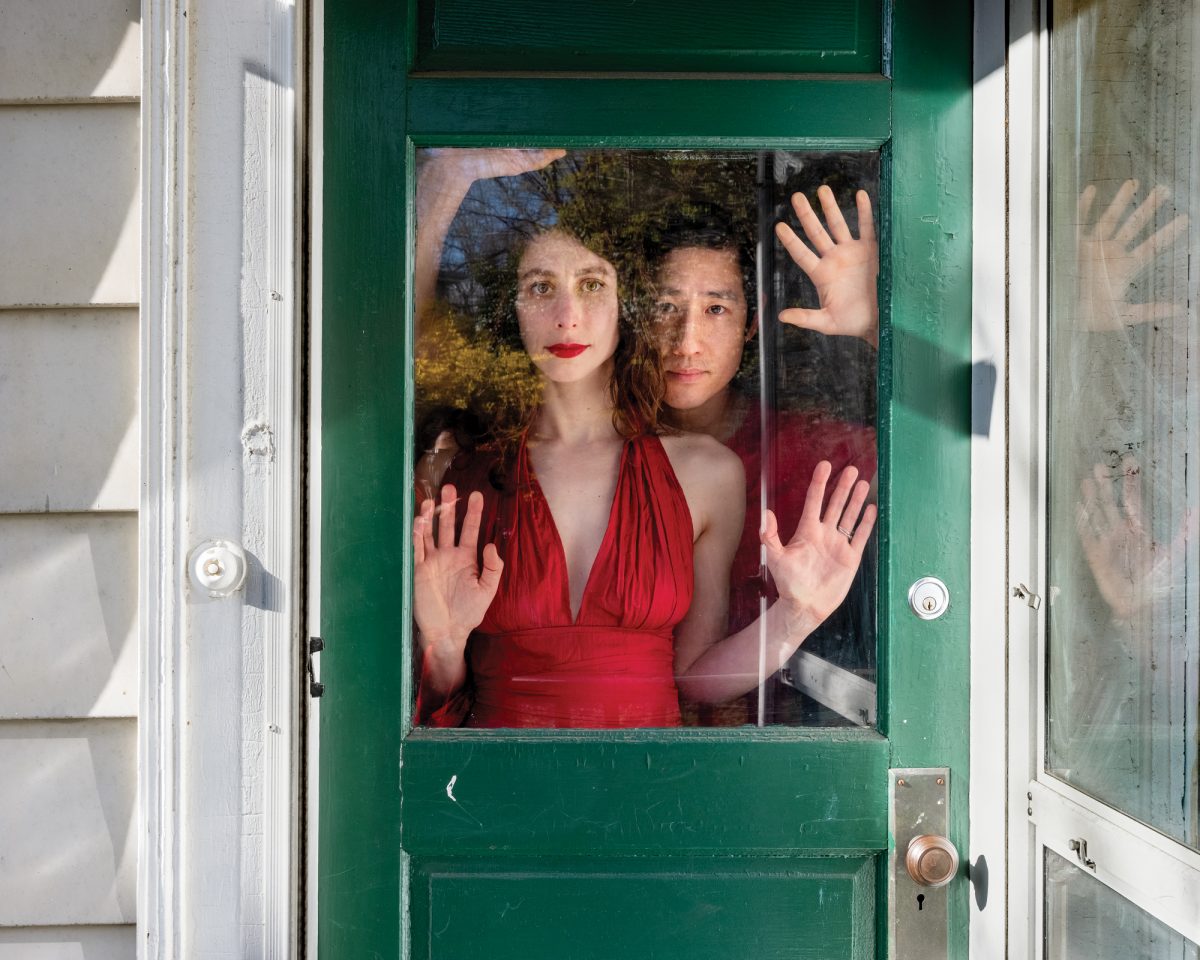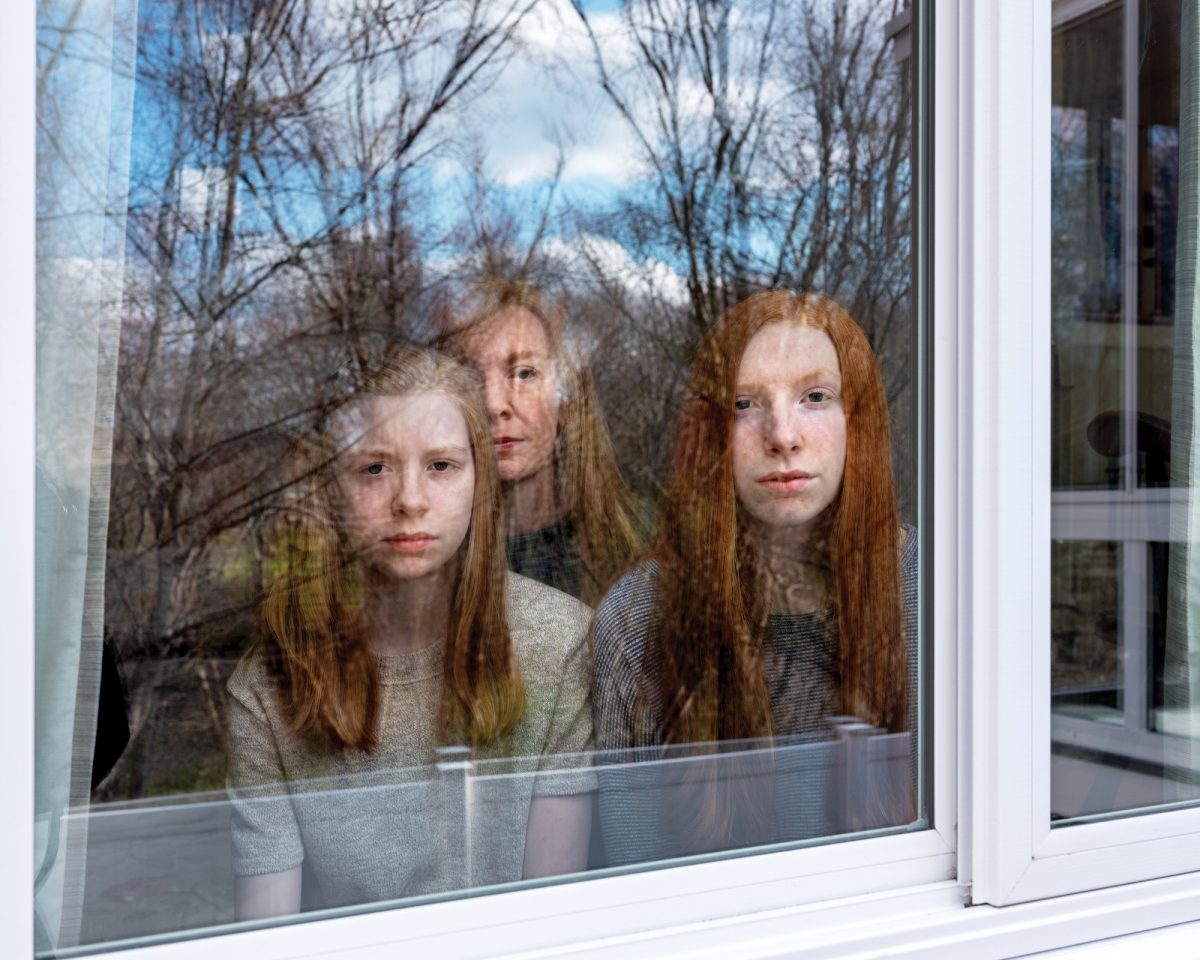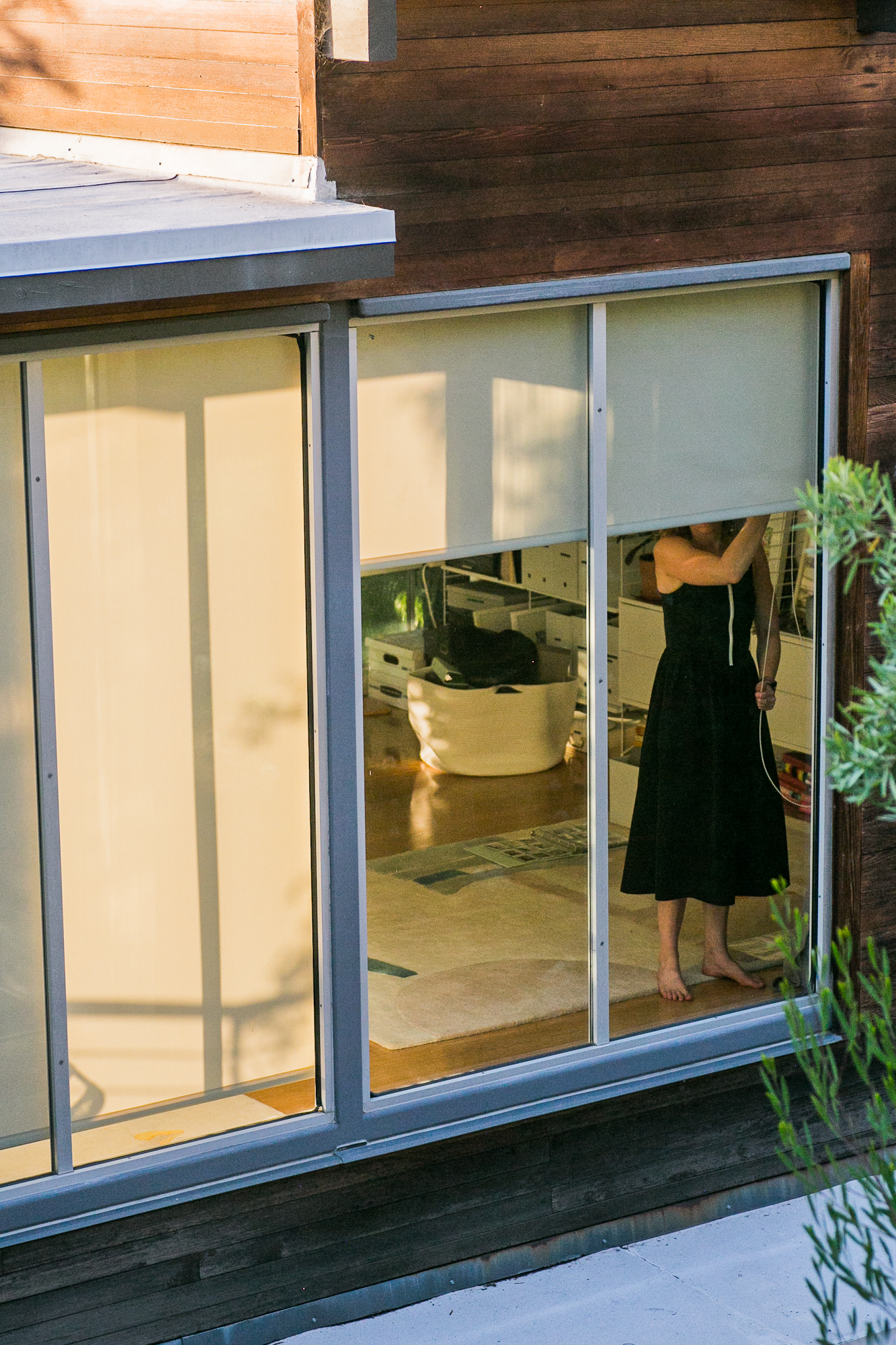
It is generally considered bad form to peep in at strangers through their windows. It was a necessary faux pas at the start of the Covid-19 pandemic, though, if you wanted to see anyone who wasn’t actually living with you.
A woman holding a glass of wine seems unaware of being watched through her glass backdoor, in one of the lockdown photos taken by LA-based photographer Caroline White. “People were convinced these were actual Peeping Tom photos,” she says, of the responses to this 2020 group of portraits shot entirely through windows. In another image from her Looking Thru Glass series, hedges shield the camera lens from the sightlines of a woman crossing her living room window, suggesting it was photographed without her knowledge. “I achieved the goal of voyeuristic authenticity,” says White. “Even though they were posed.”
White was one of several photographers drawn to the possibilities of the window during the great global quarantine that began in 2020, both out of necessity and as a symbol of the universal sensation of being trapped inside, while yearning for outward connection. With so many travel, portrait, and music photographers suddenly out of work when the pandemic hit, many found themselves turning their lenses to subjects safely shuttered behind glass.
“People are my ongoing, everlasting subject,” says Ruth Medjber. “But all of a sudden, they were gone.” The Dublin-based music photographer had always wanted to take portraits through windows, but never made time for it. London-based photographer Julia Fullerton-Batten, meanwhile, had once made portraits of her younger brother through windows, and wanted to try it again. “I’ve always loved looking through a window,” she says, “because it’s framed like a picture within a picture.”
“The window became like another frame, like a stage set where they could do whatever they want in it”
Lockdown provided opportunities for both to revisit this old concept, but their approaches differed. For Medjber, snapping 150 windows across Ireland during a time of widespread panic was a form of documentary photography where, for the first time in her career, she wouldn’t control the image (beyond centring the window in the composition). “I’m not going to tell you what to do,” Medjber told her subjects, leaving it up to them what to keep in the frame, what they would wear, and how they posed. The results were compiled in a book, Twilight Together. “I’m literally just going to walk up to your window at a certain time of day and take the photograph.”
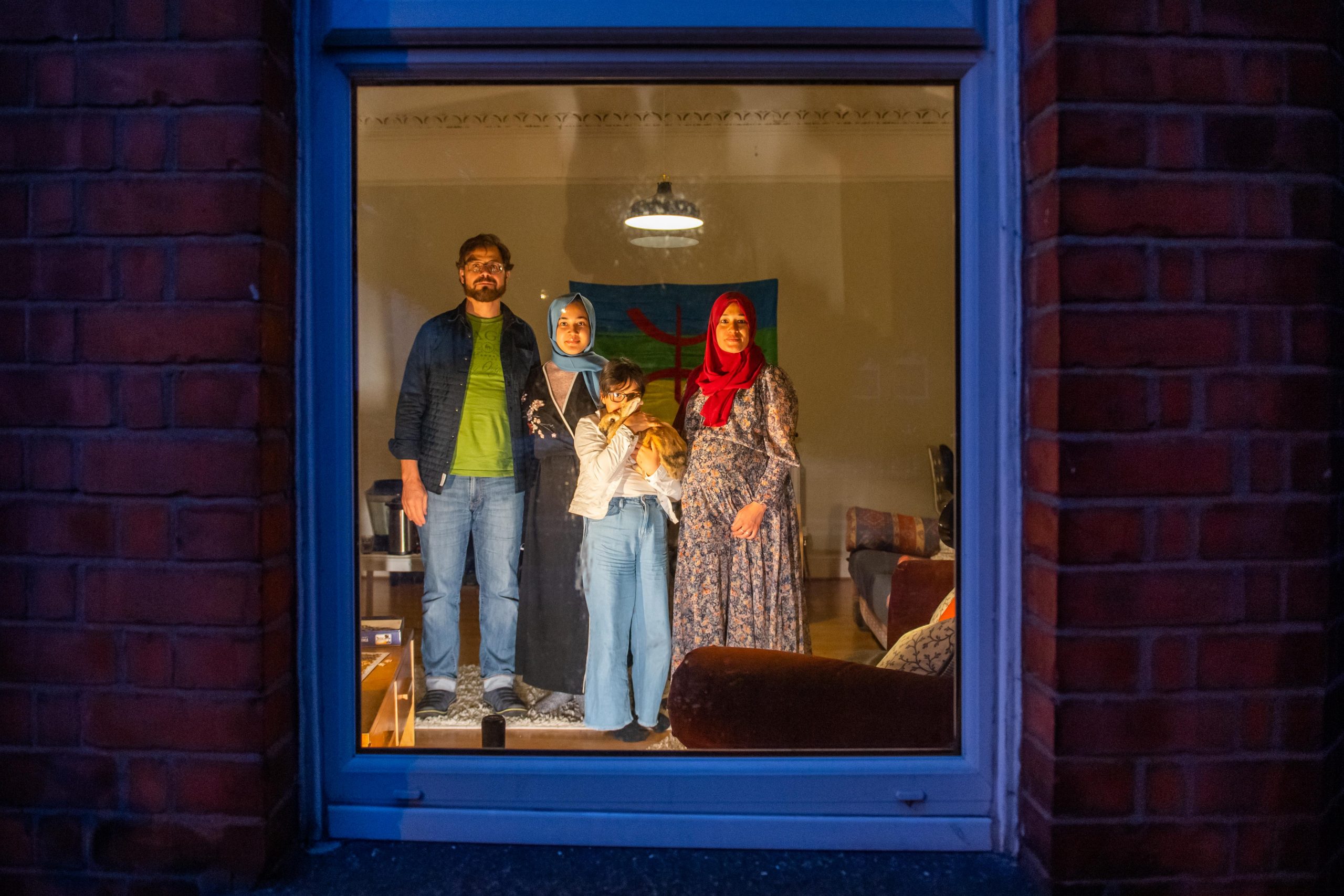
This was the opposite of Fullerton-Batten’s technique, who didn’t want to abandon the stylized cinematic look of her staged, pre-pandemic work. She bought vintage clothes and props online and sent them to her subjects, carefully advising them about lighting and poses. Her earliest shoots took an hour, but by the end of the project (one that also resulted in the publication of a book, Looking out from Within) they took closer to six, as they grew more elaborate.
“People were convinced these were actual Peeping Tom photos. I achieved the goal of voyeuristic authenticity, even though they were posed”
A particularly challenging shoot was for Penelope, Lockdown Day 51
, a portrait of an actress that Fullerton-Batten had photographed before and who lives on a houseboat with unusually large windows. To get the shot of Penelope wearing a swimsuit, bathing cap, and dressing gown, the photographer needed to contend with three boats moving in different directions at high tide—one was Penelope’s houseboat, one supported all the external lighting equipment, and Fullerton-Batten hung over the side of the third. “That’s one of my favourite images, but also the trickiest,” she says.
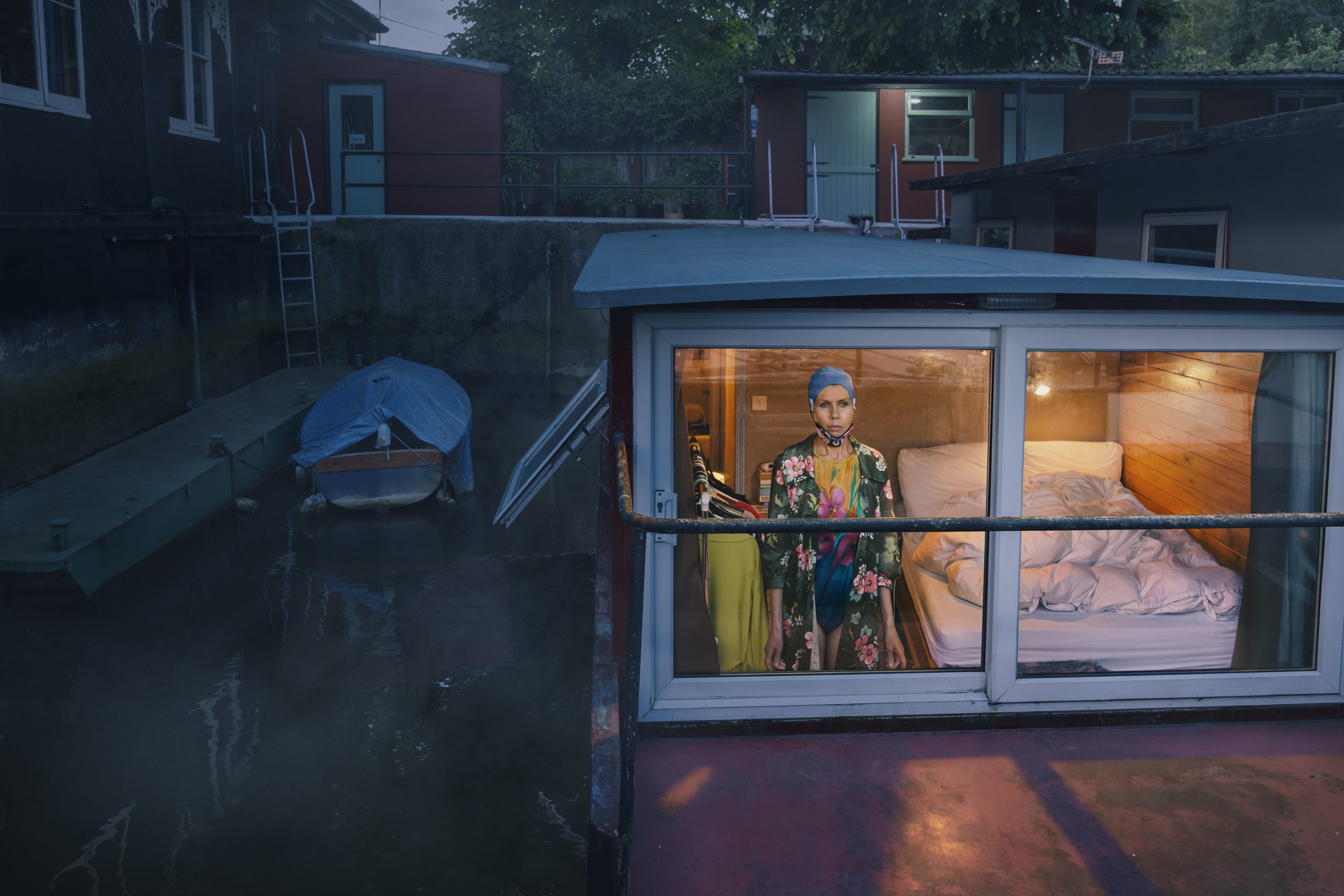
Meanwhile in Boston, Rania Matar’s quarantine portraits fell somewhere between her pre-pandemic style and the considerations of the moment. “In all my work, intimacy is so important,” she says, regarding her collaborative process which might include adjustments such as moving strands of a subject’s hair. “I had to learn to shoot how I used to shoot, even though there was a barrier between us.” This involved lots of gesticulating and using speakerphone, especially since her set-ups weren’t pre-planned.
“I’m not going to tell you what to do. I’m literally just going to walk up to your window at a certain time of day and take the photograph”
Many of Matar’s windows hold reflections of an outside world that was tantalisingly out of reach for the people contained within the frames. Seasonality is also legible in either the greenery or bareness of reflected trees, indicating the passage of time.
- Both: © Rania Matar
As time did pass and people became more accustomed to quarantine, their portraits changed, too. “There was an element of performance happening,” Matar recalls of her later lockdown photo shoots. “The window became like another frame, like a stage set where they could do whatever they want in it.”
“In all my work, intimacy is so important. I had to learn to shoot how I used to shoot, even though there was a barrier between us”
Now two years (and several vaccine rollouts) later, these photographers have resumed the kind of work they were doing pre-2020, but the experience undoubtedly changed them. Matar has switched to using the digital camera she bought out of necessity during the pandemic, since nobody was processing film. White, meanwhile, characterises her earlier work as being bright and happy. “A little bit of the ladies laughing with salad, if you will,” she describes. “My work has just become much more nuanced, because when you are shooting through windows you have to deal with all these layers.”
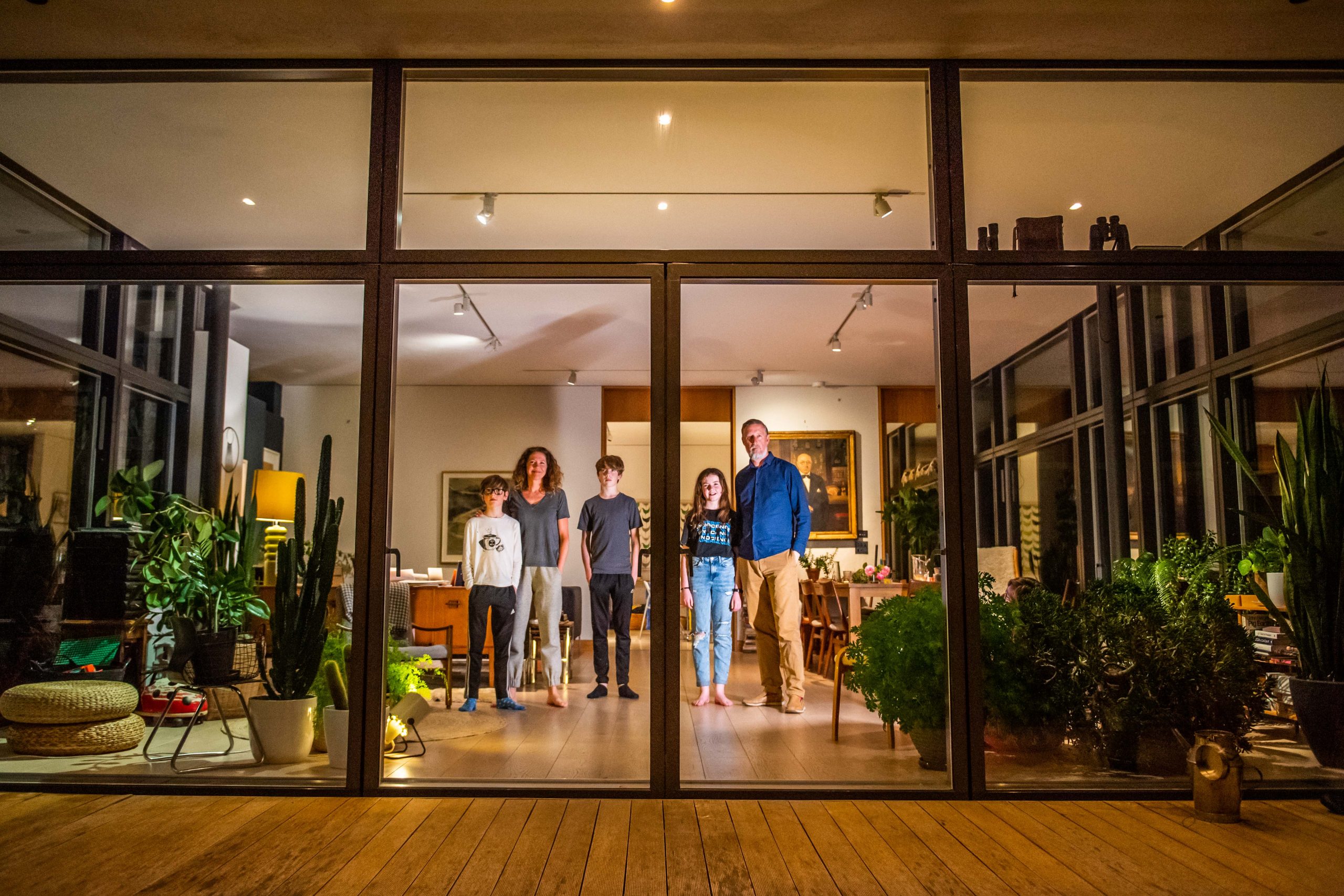
Medjber found meaning in working on larger projects with universal appeal, as opposed to piecemeal editorial assignments. “I don’t want to piddle about doing bits and pieces that don’t mean anything, anymore,” she says. “I want to do big, chunky bodies of work that have an impact.”
Fullerton-Batten also describes wanting to take on more world issues, and a desire to be more flexible with her shooting techniques. “In the past, I would stumble across something or read about it and then create a project around it with actors and sets, or bring in props,” she says. “Now, I’m more open minded.”
Hopefully an opportunity to photograph innumerable lives coming to a shrieking halt won’t come again anytime soon. For now, though, a window of visual opportunity has been cracked open.
Karen Chernick is an art historian and writer living in Tel Aviv, specialising in arts and culture, food, and travel

